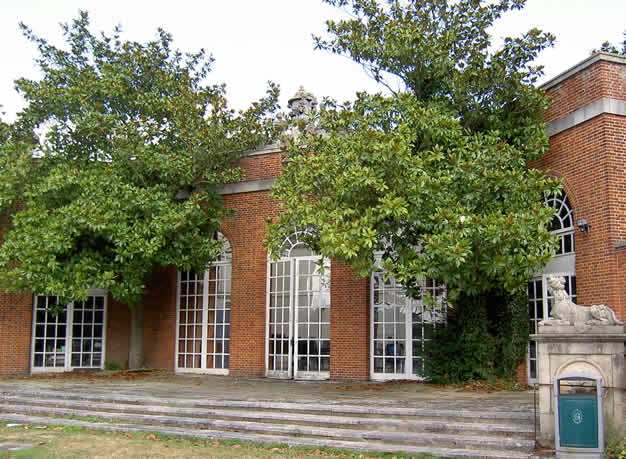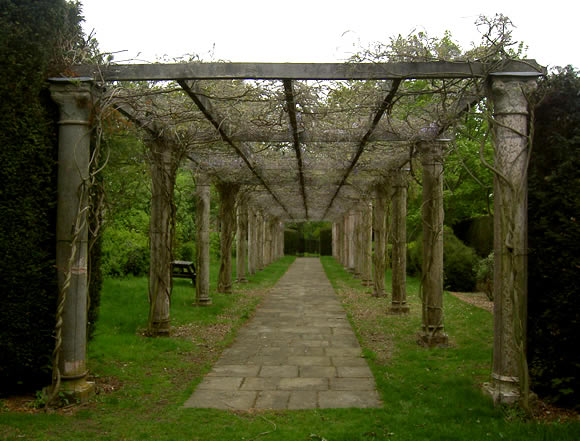This research returns to the topic of gardens as ‘living documents’. It uses the orangery at Trent Park, Enfield as the starting point for an exploration of the gardens created by Sir Philip Sassoon (1888-1939). The two gardens examined (Port Lympne, Kent being the second) are ‘living documents’; cultural landscapes connected to the worlds of politics, the arts, and design and significant meetings in both world wars.

Figure 1. The orangery designed by Reginald Cooper, c. 1931 (photographed by kind permission of Middlesex University, 2006).
The orangery at Trent Park was built c.1931 to designs by Colonel Reginald Cooper (1885-1965) now a rather elusive historical figure. It was designed in the neo-classical style as part of Sassoon’s remodelling of the large Victorian house on the estate inherited in 1912 from his father Sir Edward Sassoon (1856-1912), from whom he also “inherited” his Hythe constituency.
Like many authentic Georgian orangeries, Trent’s combined a strategic visual location with horticultural and social roles; switching from overwintering the Versailles citrus trees to providing poolside shelter in the summer.
Trent (created from 1926) was the garden of maturity; devoid of the grandiosity of Port Lympne, more in keeping with Sassoon’s progress up the political ladder. But there are common threads.

Figure 2. To the east of the orangery are formal gardens laid out in the 1910s. The pink marble columns of the pergola in the Wisteria Walk have a north – south orientation (photographed by kind permission of Middlesex University, May 2013).
The involvement of Philip Tilden (1887-1956) in both schemes is conjectural but that of Norah Lindsay (1873-1948) unambiguous. Russell Page (1906-85), a guest at Port Lympne in the 1930s, revamped the gardens there in the 1970s. Charlie Chaplin (1899 – 1977), Lloyd George (1863-1945) and Winston Churchill (1874-1965) were among guests at house parties at both venues; Churchill’s pleasure in his surroundings captured on canvas.
In the 1930s Russell Page and Norah Lindsay also worked at Ditchley Park in Oxfordshire, the home of Ronald Tree (1897-1976) and his first wife Nancy- later Nancy Lancaster (1897-1994). The subject of articles and lectures, Ditchley’s mid- twentieth century cultural landscape makes an interesting comparison with those of Trent Park and Port Lympne.
In the years since Sassoon’s death in 1939 both Trent Park and Port Lympne have been reinvented several times. Trent Park was until recently a Middlesex University campus. Port Lympne has been a wild life park since the 1970s.
